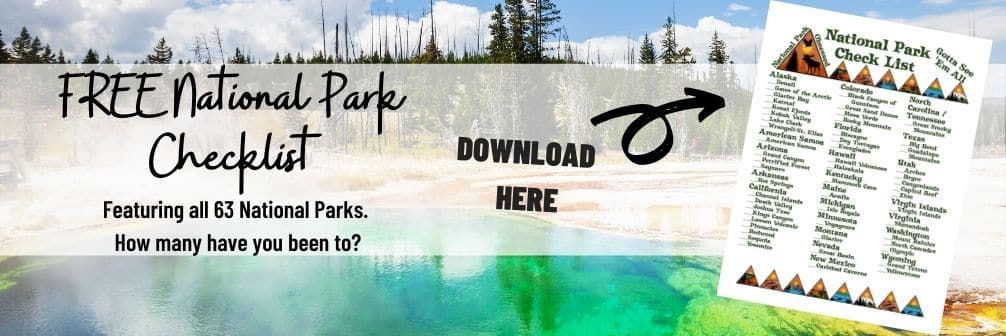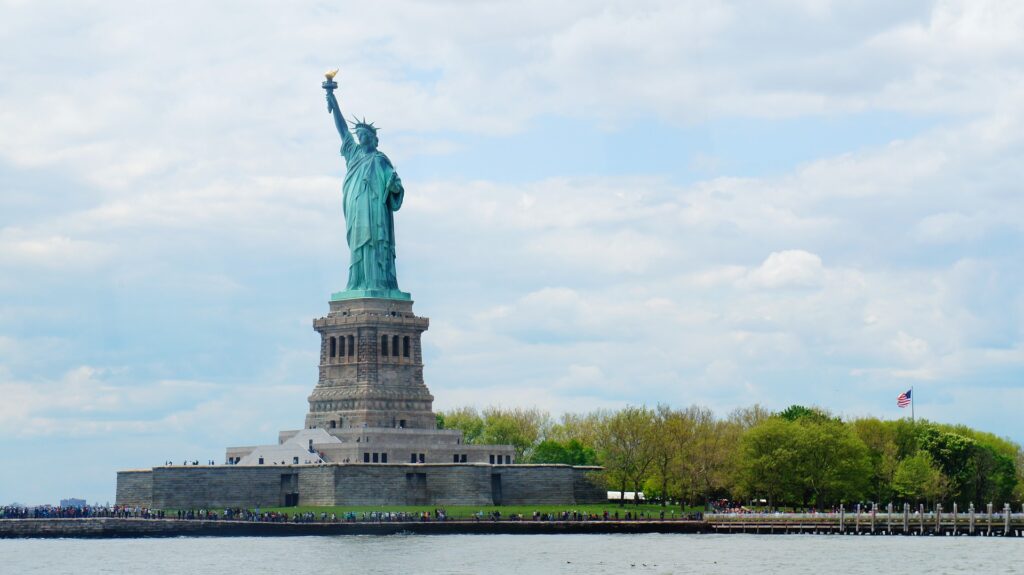
17 Things to Know Before Visiting the Statue of Liberty National Monument
- Jennifer Melroy
- Last Modified July 25, 2020
- First Published on March 28, 2020

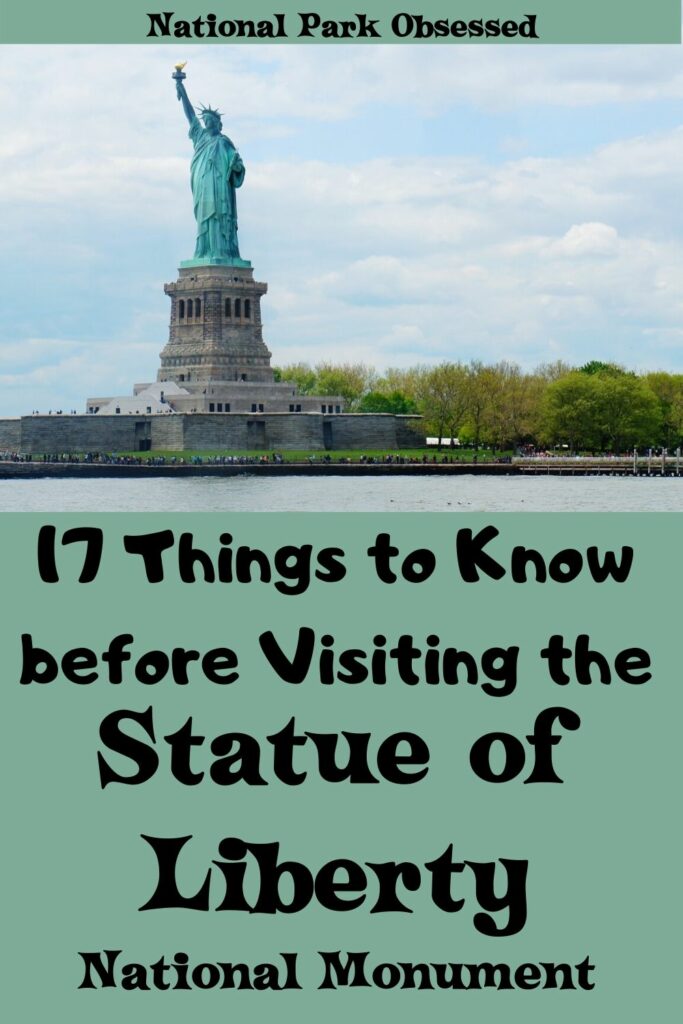
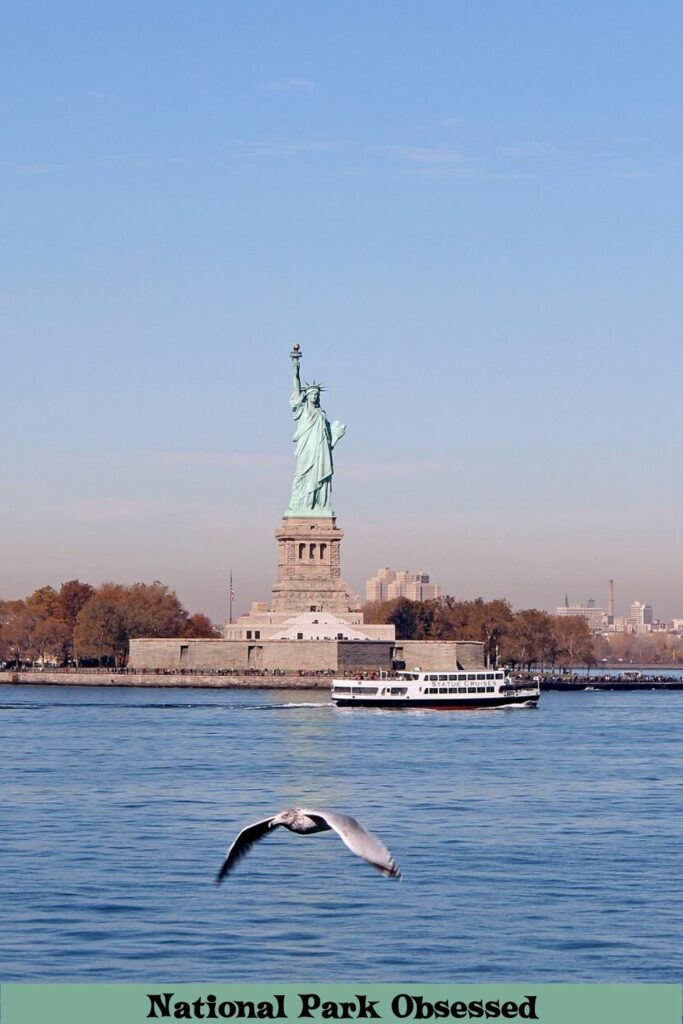
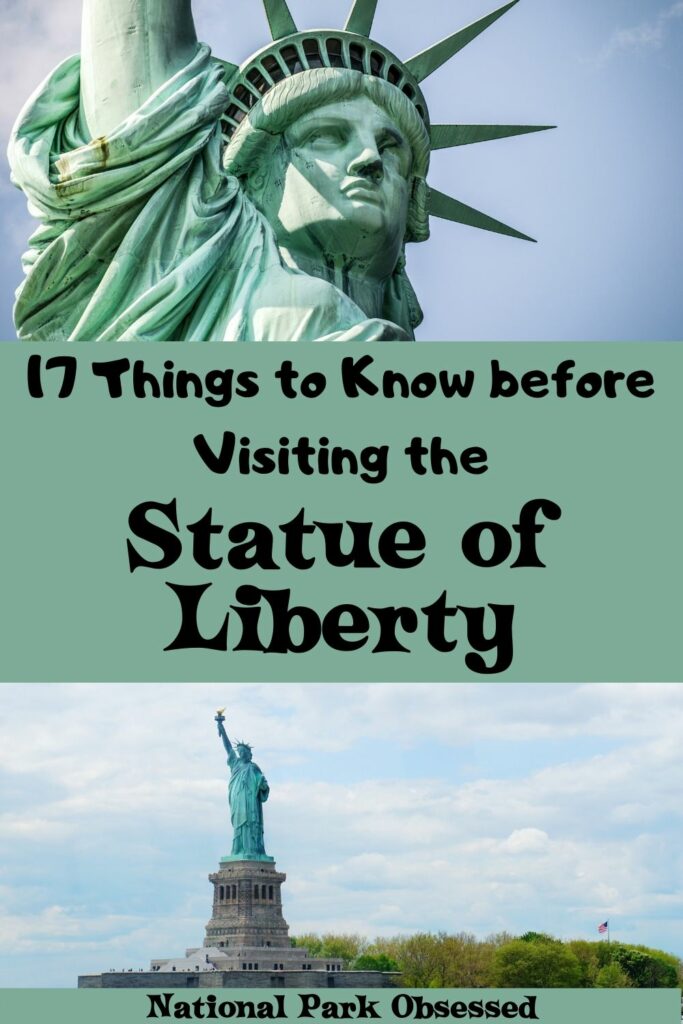
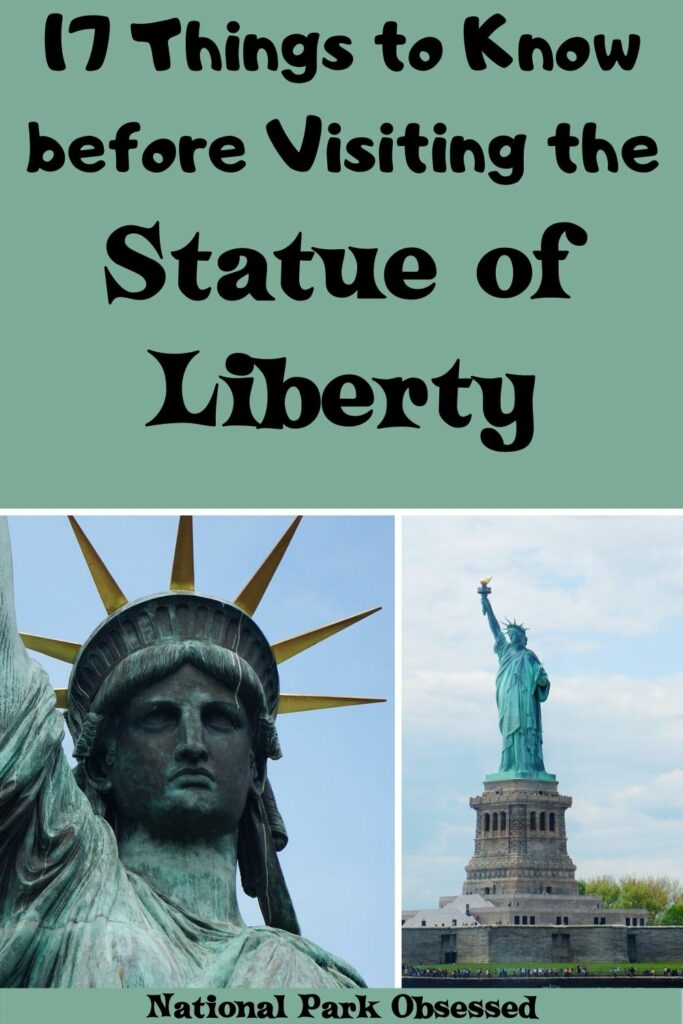

Standing proudly in New York Harbor, the Statue of Liberty is an iconic site. Lady Liberty has proudly stood watch over the harbor since 1886. The Statue of Liberty is an iconic statue and a world-famous symbol of freedom. Every year, millions of people view this iconic statue and visitors to Statue of Liberty National Monument step back in time to revisit our nation’s early period of immigration and freedom. Here are 17 things to know before visiting the Statue of Liberty National Monument.
Help support this site by purchasing one of our National Park Shirts, Poster, and other gear. Every purchase includes a donation to the national parks and helps keep National Park Obsessed’s website free to use and producing more national park guides.
Looking for more help planning your next adventure? Join the National Park Obsessed Facebook Group here to connect other national park lovers, trade advice, or see inspiring photos of the National Parks?
This post may contain affiliate links, meaning if you book or buy something through one of these links, I may earn a small commission at no extra cost to you! Read the full disclosure policy here

17 Things to Know Before Visiting the Statue of Liberty National Monument
You can visit from New York or New Jersey
The Statue of Liberty National Monument can be visited from either New York or New Jersey. The statue is located on Liberty Island. The only way to access Liberty or Elis Island is via the ferry service offered by Statue Cruises. Private vessels are NOT allowed to dock at Liberty or Elis Islands.
New York Ferry Service
The New York Ferry Service departs from Castle Clinton National Monument (an NPS unit) in Battery Park. Battery Park is at the lower end of Manhattan.
The New York Ferry stops at Liberty Island then Elis Island before returning to New York.
It is recommended that you take public transportation to Battery Park as parking is very limited and very expensive. Battery Park can be reached via subway and bus.
Reach Battery Park by Subway
- Line 1 to South Ferry
- Line 4 to Bowling Green
- Line 5 to Bowling Green
- Line R to Whitehall St.
Reach Battery Park by Bus
- M5 to South Ferry
- M15 to South Ferry
- M20 to South Ferry
New Jersey Ferry Service
The New Jersey Ferry Service departs from Liberty State Park in Jersey City, NJ
The Jersey Ferry stops at Elis Island then Liberty Island than returns to New Jersey.
Liberty State Park is best reached by driving. Parking is available for a fee. Public transportation is available via the Hudson-Bergen Light Rail BUT the station is a 1-mile walk from the ferry.
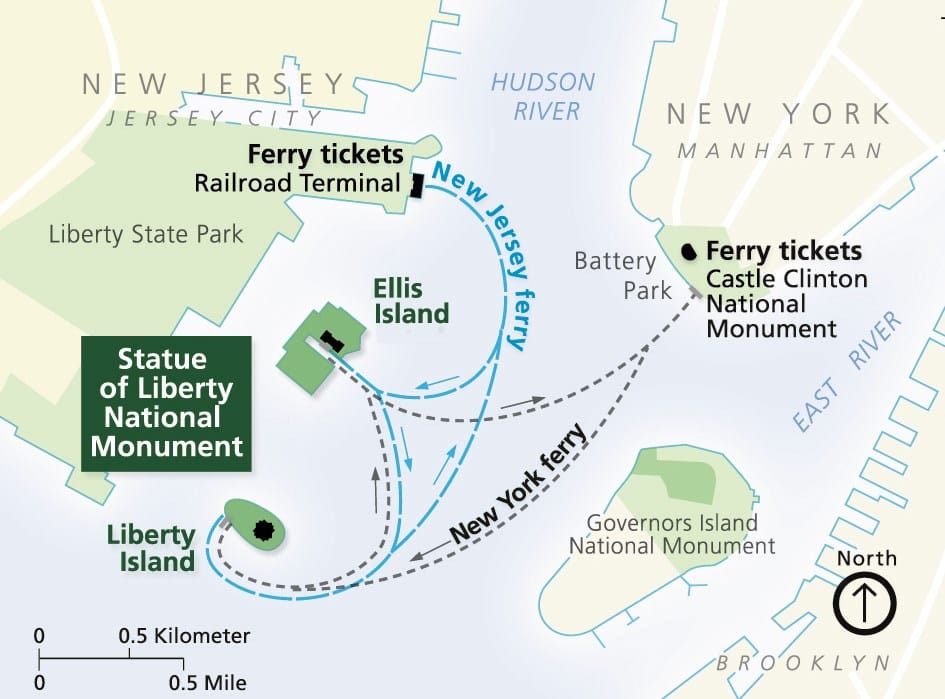
National Park Passes are not valid for entrance
Entrance to the Statue of Liberty National Monument and Elis Island is technically FREE. The only way to access the islands is via Statue Cruises which is the official ferry provider.
As Statue Cruises is a concessionaire, the America the Beautiful Pass does NOT cover the ferry ticket, entrance to the Statue of Liberty pedestal or crown, or Elis Island Hospital Tour.
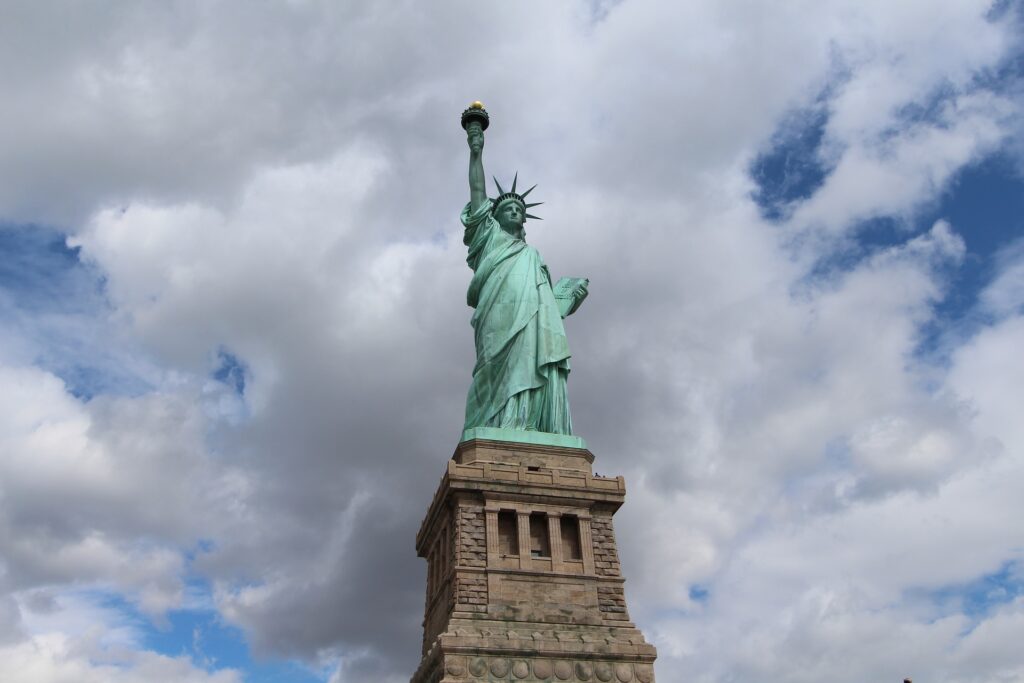
There are different types of tickets
There are four types of tickets to the Statue of Liberty and Elis Island. All the tickets come with access to Liberty and Ellis Island. Due to the popularity of visiting the crown, a maximum of 4 tickets can be purchased in an order. Advanced reservations are recommended for all ticket types.
- Reserve Ticket – The reserve tickets are the most limited option that includes an audio tour of Liberty and Ellis Island, plus priority entry into the screening facility queue at the departure point. If you book this ticket, ask at the ticket counter when you pick up your ticket and see if any walk-up pedestal tickets available.
- Pedestal Reserve Ticket – The Pedestal Reserve Tickets includes the benefits of the reserve ticket option and access to the Fort Wood section of the pedestal. There are about 2,400 pedestal reserve tickets a day.
- Crown Reserve Ticket – The Crown Reserve Tickets are very limited in availability and these tickets provide access to the crown of the Statue of Liberty plus pedestal and museum access. There are about 500 Crown Reserve Tickets a day.
- Hard Hat Reserve Ticket – The Hard Hat Reserve Tickets include a 90 minute guided to the unrestored southern side of Elis Island. This tour includes access to the Ellis Island Hospital and the “Unframed – Ellis Island,” Art Exhibit by renowned French artist JR.
Wheelchair users should note that the Statue of Liberty outdoor observation deck, balcony, and crown are NOT wheelchair accessible. The Hard Hat tour on Elis Island is not wheelchair accessible either.
[go_pricing id=”classic-gr_5e6b071adb538″]
Get your tickets as far in advance as possible
The Statue of Liberty is a popular tourist attraction for those visiting New York City and the monument has been getting 4 million-plus visitors a year. Statue of Liberty tickets are at a premium and tickets sell out fast.
There are about 10,000 tickets available every day.
- Reserve Ticket – There are about 6500 reserve tickets. About 4,000 are for a New York departure and 2,500 for a New Jersey departure.
- Pedestal Reserve Ticket – There are about 2,900 Pedestal Reserve Tickets a day.
- Crown Reserve Ticket – There are about 500 Crown Reserve Tickets a day.
- Hard Hat Reserve Ticket – There are about 84 Hard Hat Reserve Tickets.
Tickets are generally released six months in advance and it is recommended that you book your crown tickets at least 3-4 months in advance.
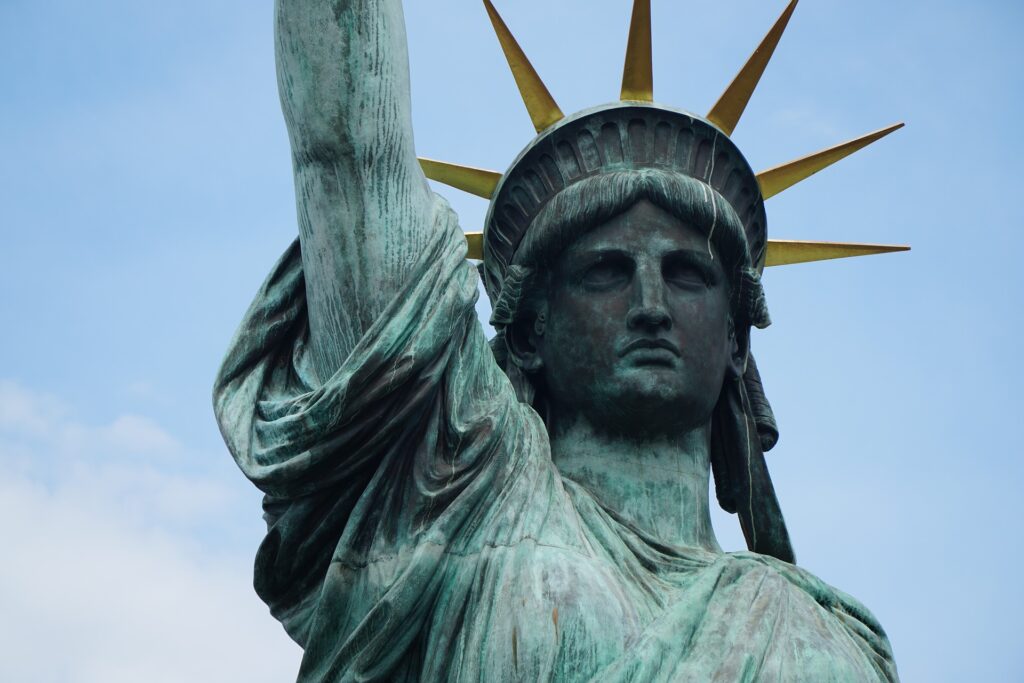
It’s quite a climb to the Statue of Liberty Crown
The Statue of Liberty is 305 ft or 20 stories tall from the foundation to the top of the torch. The Crown can only be reached by climbing a double-helix spiral staircase. It is 377 steps from the base of the pedestal to the crown. There is NO elevator past the top of the pedestal.
This is a strenuous climb that isn’t for everyone. Here are a few things you need to know about making the climb to the Statue of Liberty Crown.
- The staircase is steeper than most modern staircases
- The steps are only 19 inches wide.
- If you are taller than 6 ft, you need to watch your head. There isn’t a lot of clearance.
- The inside of the statue can be upwards of 20 degrees hotter than the outside temperature.

Access to the torch is prohibited
There is NO public access to the Statue of Liberty’s torch. Despite popular belief, access to the arm and torch is not related to structural damage from wear and tear. The structural damage that closed the torch was due to German sabotage during World War I.
On July 30, 1916, a munitions depot on the nearby island of Black Tom experienced a series of small fires. At the time the depot was storing some 2,000,000 of small arms and artillery ammunition and 100,000 pounds of TNT. The explosion resulting from the fire caused an earthquake that measured between 5.0 and 5.5 on the Richter scale and the detonation wave broke windows upwards of 25 miles away and knocked fireman off their feet. Fragments from the explosion travel long distance and some were lodged in the Statue of Liberty causing the structural damage that closed the torch. It was determined that German agents had set the fires.
This act of German sabotage was designed to stop the US from selling arms and munitions to Germany’s enemies. In the end, the Black Tom explosion help shift public opinion against Germany eventually led the US’s entry to World War I.
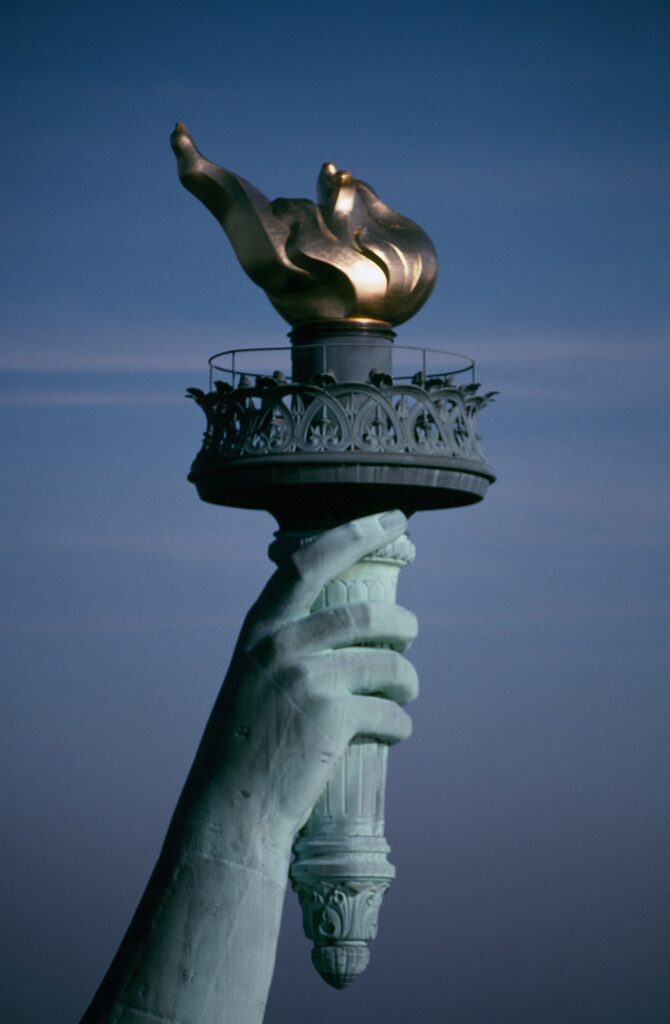
Book an early tour
There is a lot to explore when visiting the Statue of Liberty National Monument. Visitors should plan on spending five to six hours between touring Liberty and Ellis Island,
We highly recommend booking your ticket for as early in the morning as possible so you can maximize your visit.
It is open every day but Thanksgiving and Christmas
Liberty Island is open every day of the year but Thanksgiving and Christmas. Access to Liberty Island may also be impacted as a result of inclement weather.
Be prepared for airport-style security
Security at Statue of Liberty National Monument is tight. Basically, be prepared for airport-style security before boarding the ferry to Liberty Island and a secondary screening before entering the Statue of Liberty Museum and Pedestal. A reserve ticket allows you priority entry into the boarding queue.
The following items are not allowed on the ferry. There are no storage lockers available at either screening location in Liberty State Park or Battery Park.
- All weapons, including: firearms, explosives, mace, knives and any “dual-use“ items that could be dangerous.
- Unmanned aircraft systems (UAS), drones and other similar remote-controlled flying devices or vehicles.
- Suitcases, carry-on luggage, coolers, and other large parcels
- Face masks and/or costumes that are designed to conceal the identity of a person are prohibited.
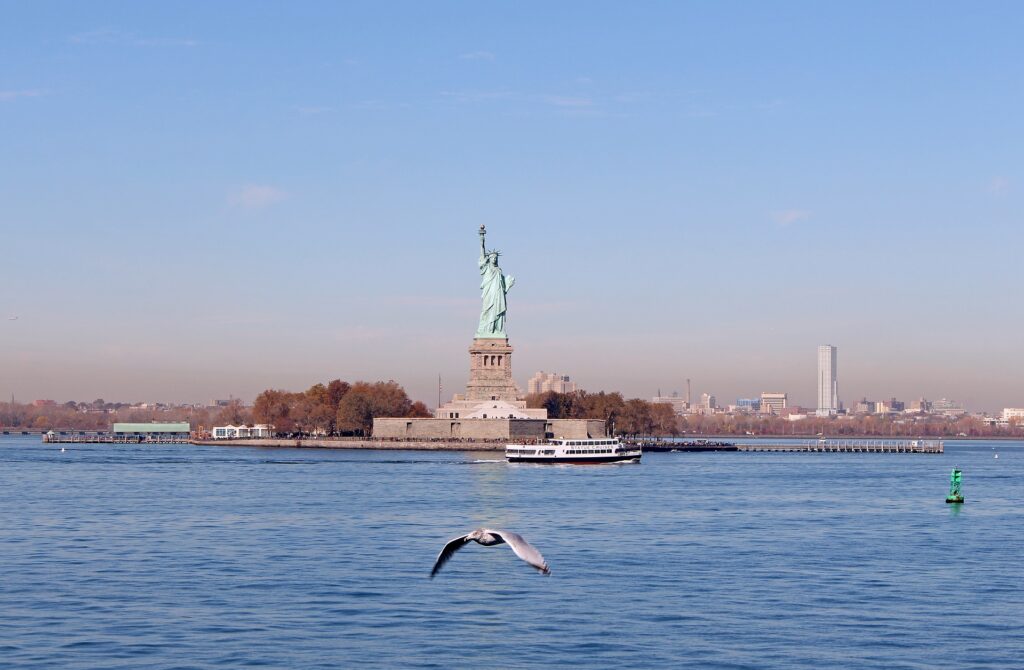
Store your valuables and bags before heading into the Pedestal or Crown
Only the following items are permitted inside the Statue of Liberty Pedestal or Crown.
- Camera / Cellphone – No camera bags or cases allowed
- Water in a clear plastic bottle
- Any necessary medication
Lockers are available at secondary screening locations for .25 cents. A change machine is also available that accepts $1 and $5 bills. The following common (but not limited to) items must be secured in a locker: keys, writing instruments, purses, large umbrellas, camera cases, backpacks, shopping bags, any food and drinks, and any item that may impede progress on the staircase.
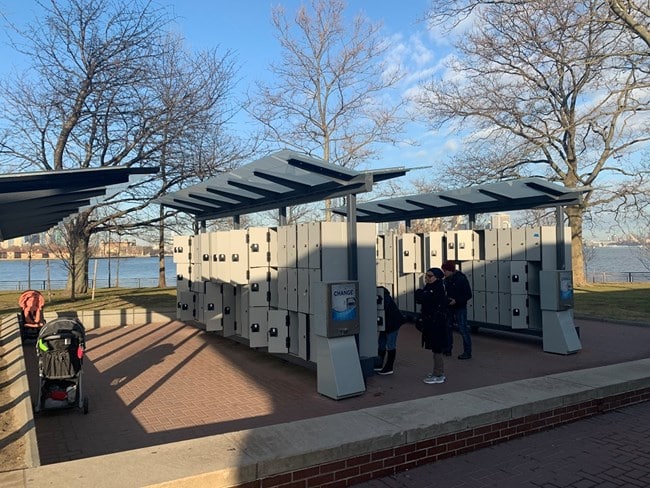
The Statue of Liberty was a gift from France
The Statue of Liberty was a joint project between France and the United States. The statue was designed as a symbol of friendship between the two nations. It was agreed that the American people would fund the Statue’s pedestal and the French people would fund the Statue and its assembly.
The monument was proposed by Frenchman Edouard de Laboulaye in 1865. A decided later, sculptor Frederic Auguste Bartholdi was commissioned to design a sculpture to commemorate the centennial of the American Declaration of Independence and was named “Liberty Enlightening the World.”
As Bartholdi designed this massive colossal copper sculpture, he realized he needs an engineer to address the structural issues. He commissioned Eiffel Tower designer Alexandre Gustave Eiffel to design the internal support framework. The Statue was finished in July 1884 and shipped to the US in 214 crates. The boxes arrived in New York in June 1885, but assembly wouldn’t start until the spring of 1886.
The Statue’s Pedestal was funded by a viral marketing campaign
Raising the funds to build the Statue’s Pedestal wasn’t an easy task. Funding efforts began with the auction of art and manuscripts such as poet Emma Lazarus’s poem “The New Colossus” including the iconic lines: “Give me your tired, your poor/Your huddled masses yearning to breathe free.”
These early efforts didn’t raise enough money to fully fund the project. In a blow to the project, both Congress or New York Governor blocked funding bills. Both Boston and Philadelphia offered to fund the statue as long as the statue was built in their city.
Joseph Pulitzer didn’t want the statue relocated. Pulitzer used his newspaper, The New York World, to launch a fundraising campaign to raise the need $100,000. He pledged to print the name of every contributor in his newspaper. The campaign was a MASSIVE success. It only took six months to raise the money. Donations poured in from across the United States. In the end, over 125,000 people donated to the fundraiser from across the US. Donations ranged from five cents donated by a poor office boy to $15 from a rival city’s home for alcoholics.
The statue wasn’t always green
The Statue of Liberty spent the first few decades of changing color. The Statue was a shinny brown copper color when it arrived from France. As the decade passed the copper underwent a chemical reaction and formed a layer of mineral cuprite which as a dull pinkish-red hue. This reaction was caused by a combination of air pollution and oxidation. Further chemical reactions changed the mineral cuprite into tenorite which is black in color.
In 1900, the tenorite had further oxidized and reacted with the sulfuric acid in the air and started to become a blue-green. By 1906, the entire Statue had developed this blue-green patina. This iconic blue-green patina is the final stage of these chemical reactions and hasn’t changed in more than a century.
You can see the original torch
In 1984, the Statue of Liberty was closed for extensive renovations. During the renovations, it was found that the original torch had been leaking water since the 1916 explosion repairs. It was decided to replace the original torch with a replicate with a 24-karat gold flame.
Even with the torch replacement and renovations, the public is still unable to access the torch. The original torch has been placed in the Statue of Liberty Museum. Visitors can walk around the torch and enjoy the history.
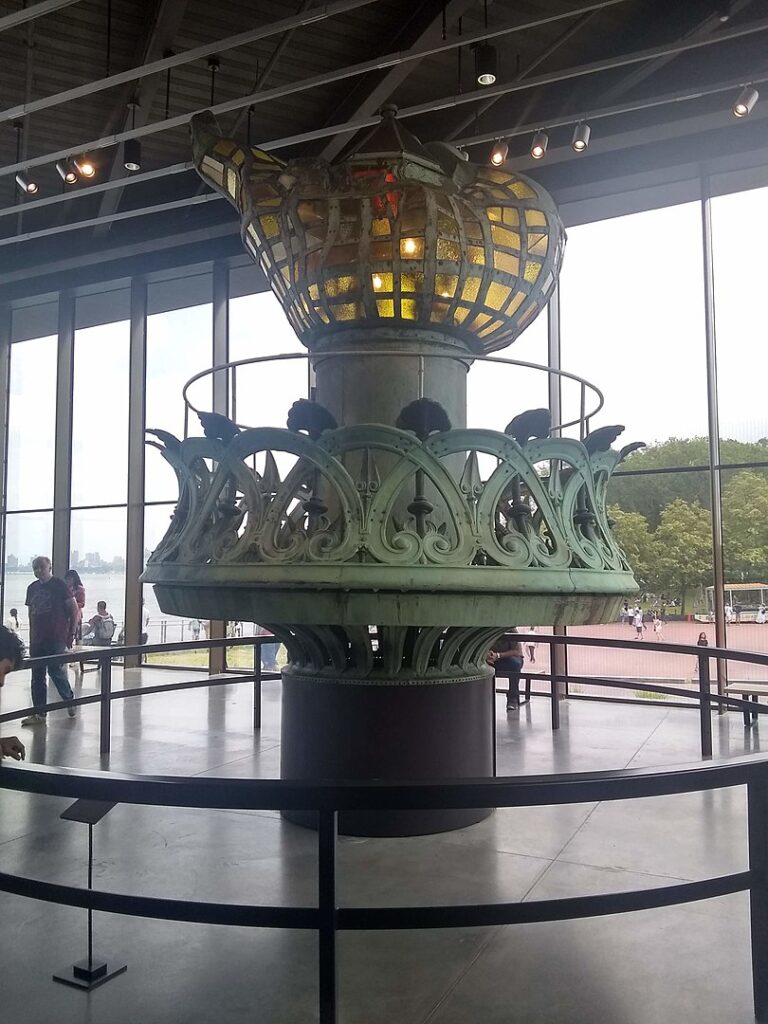
Elis Island is included in your Statue of Liberty ticket
Ellis Island is included your ticket to the Statue of Liberty National Monument. Depending on your ticket, Elis Island is your first ferry stop or your second ferry stop. Ellis Island was the busiest immigration inspection station from 1892 to 1954.
Many Americans can trace their family history to Ellis Island
Elis Island was in operation for 62 years. During that time, 12 million immigrants passed through the island. It is estimated that 40% of Americans can trace their ancestry back to Elis Island. The island was the site of the first Federal immigration system.
Visitors to Ellis Island can search and trace their family history at the American Family Immigration History Center.
There are additional National Park Sites nearby
The Statue of Liberty National Monument is not the only National Park Service Site in the New York/New Jersey area. If you are planning on renting a car or using public transportation, these sites are only minutes away.
The Lower Manhattan area is home to multiple sites including:
- African Burial Ground National Memorial
- Castle Clinton National Monument
- Federal Hall National Memorial
- Governors Island National Monument
- Stonewall National Monument
- Theodore Roosevelt Birthplace National Historic Site
Other nearby parks include:
- Alexander Hamilton Grange National Memorial
- Fire Island National Seashore
- General Grant Memorial
- Sagamore Hill National Historic Site
- St Paul’s Church National Historic Site
- Thomas Edison National Historic Park
Get help planning your trip to Statue of Liberty National Monument
- National Parks of New York
- 17 Things to Know Before Visiting the Statue of Liberty National Monument

Jennifer Melroy
Hi, I'm Jennifer!

Welcome to the wonderful world of National Parks. I'm here to help you plan your NEXT amazing adventure through the United States National Parks and beyond. I want the national parks to be accessible to all.
I live in Tennessee, and when I'm home, you can find me hiking in the Smokies and the Cumberland Plateau.
58/63 National Parks
250+/423 National Park Units
Want to know more? Start Here.
ACKNOWLEDGEMENT OF LAND
On this site, we promote travel to the United States and beyond that are the traditional lands of Indigenous and First Nations peoples.
With respect, I make a formal land acknowledgment, extending my appreciation and respect to these lands’ past and present people.
To learn more about the people who call these lands home, I invite you to explore Native Land.
DISCLAIMER
National Park Obsessed assumes no responsibility or liability for any errors or omissions in the content of this site (NationalParkObsessed.com). The information contained in this site is provided with no guarantees of completeness, accuracy, usefulness or timeliness. You are encouraged to conduct your own due diligence before acting on the information provided on this site and should not rely on the opinions expressed here.
There is an inherent risk in all outdoor recreation activities, the reader assumes all responsibility for their own personal safety.
DISCLOSURE
We are a participant in the Amazon Services LLC Associates Program, an affiliate program designed to provide a means for us to earn fees by linking to Amazon.com and affiliated sites.
Privacy Policy • About Us • Contact
Select stock photography provided depositphotos
Copyright ©2023 National Park Obsessed, LLC
Privacy Overview
Last Updated on 25 Jul 2020 by Jennifer Melroy

